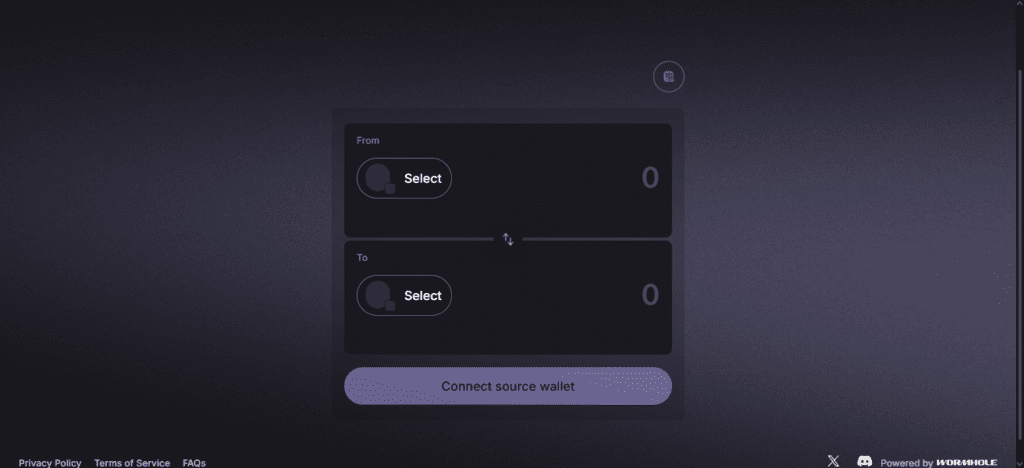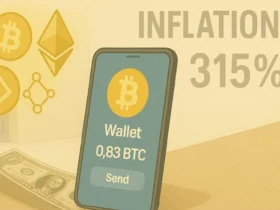In this post, I will analyze the advantages and disadvantages of bridging your tokens. Token bridging enables you to transfer assets from one blockchain to another and, hence, access different DeFi platforms, NFTs, and networks with lower fees.
Although it allows freedom and new ventures, it still poses concerns of a user’s consideration, such as security issues, exorbitant fees, and liquidity challenges.
What is Token Bridging?
Token bridging lets users move digital assets from one blockchain to another. Instead of moving the token directly, the original token is ‘wrapped’ or converted to an equivalent token and the original is locked.

For instance, an ETH token can be bridged from Ethereum to Polygon to access DeFi apps at cheaper rates. Token bridging allows users to access numerous dApps, NFTs, and earning opportunities across different ecosystems.
This comes with risks however, including the possibility of hacks, exorbitant fees, or scarcity of resources if not used properly.
How They Work Token Bridging?
Token bridging works on the principle of lock-and-mint or burn-and-release. It does not physically move coins from one blockchain to another.
Locking on Source Chain – Whenever you bridge, the tokens are secured in a smart contract on the commencing blockchain.
Minting on Destination Chain – The bridge creates a “wrapped” version of your token on the destination chain. For example, ETH → Wrapped ETH on Polygon.
Redeeming Back – To move funds back, the wrapped tokens are burned, and the original tokens are unlocked on the source chain.
Why Bridging has Become Popular in the Multi-Chain Crypto Ecosystem
The emergence of numerous blockchains like Ethereum, BNB Chain, Polygon, Avalanche, Solana, and Layer 2 networks have further fragmented the crypto landscape. Each chain provides its own benefits like cheap fees, quicker transaction speeds, or unique dApps.
However, users’ assets are often constrained to the proprietary networks, thus diminishing user freedom. Token bridges address this challenge by ensuring the smooth transmission of value across different blockchains.
This provides users with greater access to different DeFi protocols, yield-generating opportunities, and even NFT marketplaces. As users pursue lower costs and improved performance, bridging has become a key element in optimization crypto usage across different ecosystems.
Pros And Cons of Bridging Your Tokens

Pros of Bridging Tokens
Access to Multiple Ecosystems – Bridges allow you to bypass the limitations of your network and access other chains to interact with dApps, DeFi, and NFTs that would otherwise be inaccessible.
Better Yield Opportunities – You may be able to earn higher APYs alongside more lucrative staking and liquidity pools on other chains.
Lower Fees – Some chains like Layer 2s or other Layer 1s have significantly dirt-cheap fees than the Ethereum mainnet, which brings down your overall spending.
Scalability – Bridging provides access to faster and more scalable chains, while you still maintain exposure to the original assets.
Interoperability – Bridges enhance the movement of assets from one chain to another, increasing the overall network utilization.
Cons of Bridging Tokens
Security Risks – Cross chain bridges are targets of hacks and exploits that result in tremendous losses.
High Fees & Slippage – You might, however, be subjected to exorbitant gas fees or slippage, depending on the bridge and chains in use.
Complex User Experience – Bridging is still, however, one of the more overwhelming tasks that crypto newbies must grapple with for a while, given the many steps and wallets involved.
Trust Issue of Validator Centralization. Some bridges are run by a small number of validators, which brings in the risks of trust.
Liquidity Constraints. Not all bridges or chains have sufficient liquidity, which might make the swapping or utilization of the assets more difficult after being bridged.
Best Practices for Safe Bridging
Token bridging comes with lots of great opportunities, we, however, prefer people using safe methods. Below are some of the best practices for safe bridging.
Research the Bridge’s Security History: Find out if the bridge has ever been security audited and if has ever been hacked/exploited.
Start with Small Amounts: Don’t start out with your largest sum, begin with small amounts and gradually increase as you become more comfortable with the process.
Use Well-Known and Audited Bridges: Don’t use bridges with established reputations.
Monitor Fees and Liquidity: Watch out for high gas fees. Low liquidity bridging with high gas fees is probably the worst.
Conclusion
To sum up, Bridging Tokens enables access to diverse blockchains, DeFi platforms, and lower bridges fees, but comes with its own drawbacks such as hacks, outrageous gas fees, and liquidity problems.
Remember to use crypto bridges with great caution and start with small amounts. Rely on audited platforms to ensure safety.
FAQ
Token bridging allows you to transfer assets from one blockchain to another by locking the original tokens and minting a wrapped version on the destination chain.
Bridging gives access to multiple ecosystems, cheaper transaction fees, faster networks, and higher yield opportunities in DeFi platforms.
Benefits include interoperability between chains, better scalability, access to NFTs and dApps, and potential for higher returns.
Risks include security vulnerabilities, hacks, high fees, slippage, and limited liquidity on the destination chain.
Bridging is generally safe if you use well-known, audited bridges and start with small amounts, but no bridge is completely risk-free.















Leave a Reply